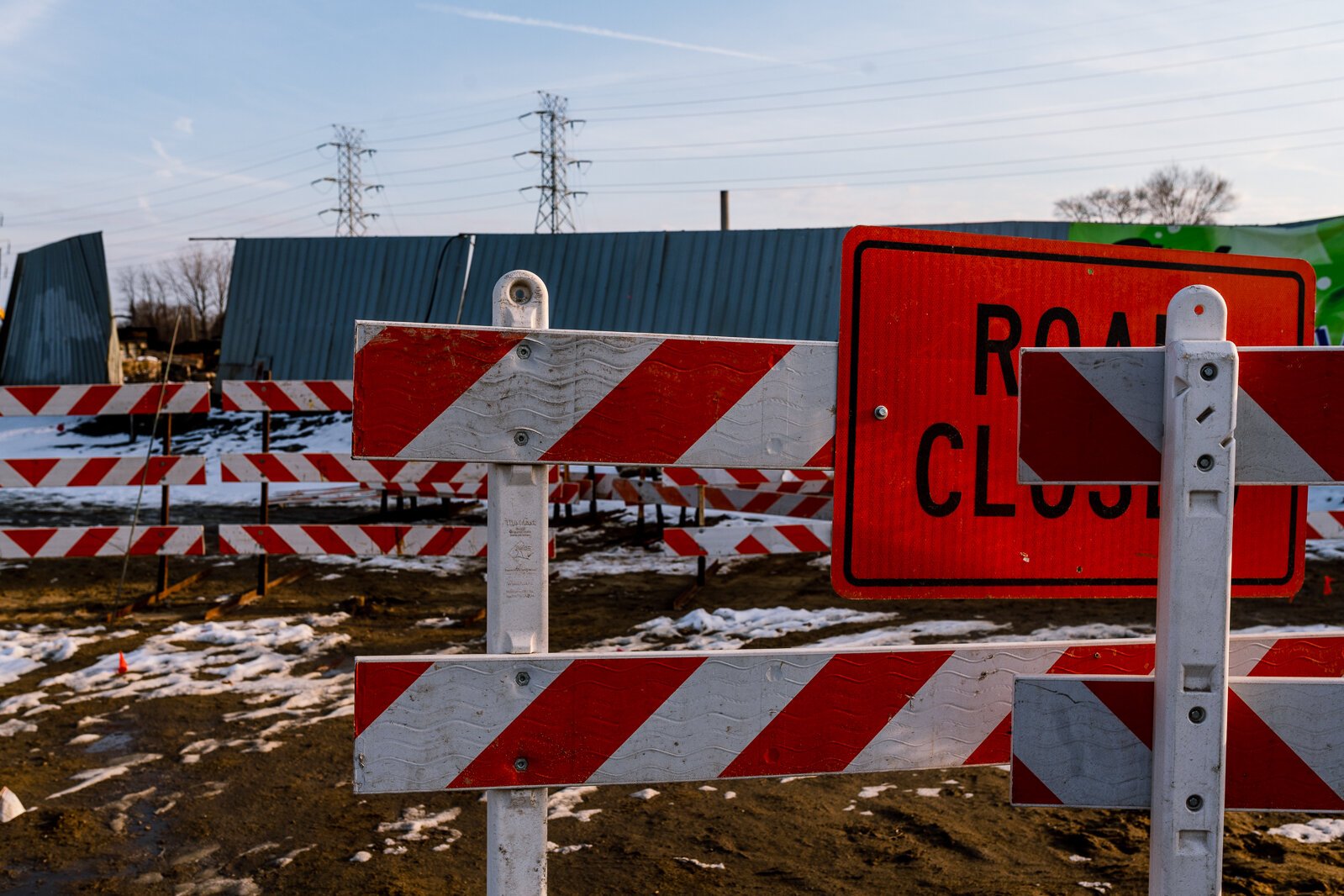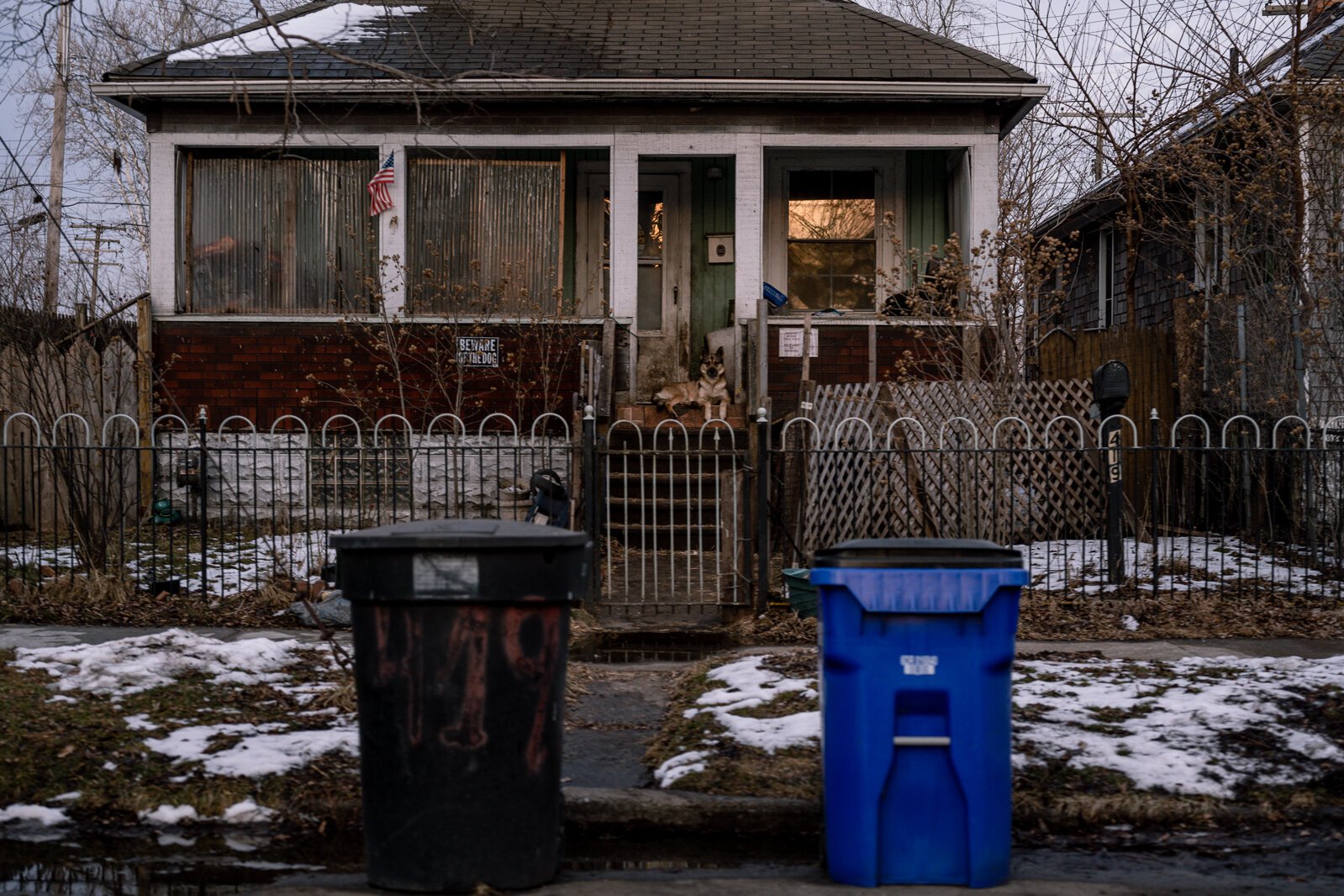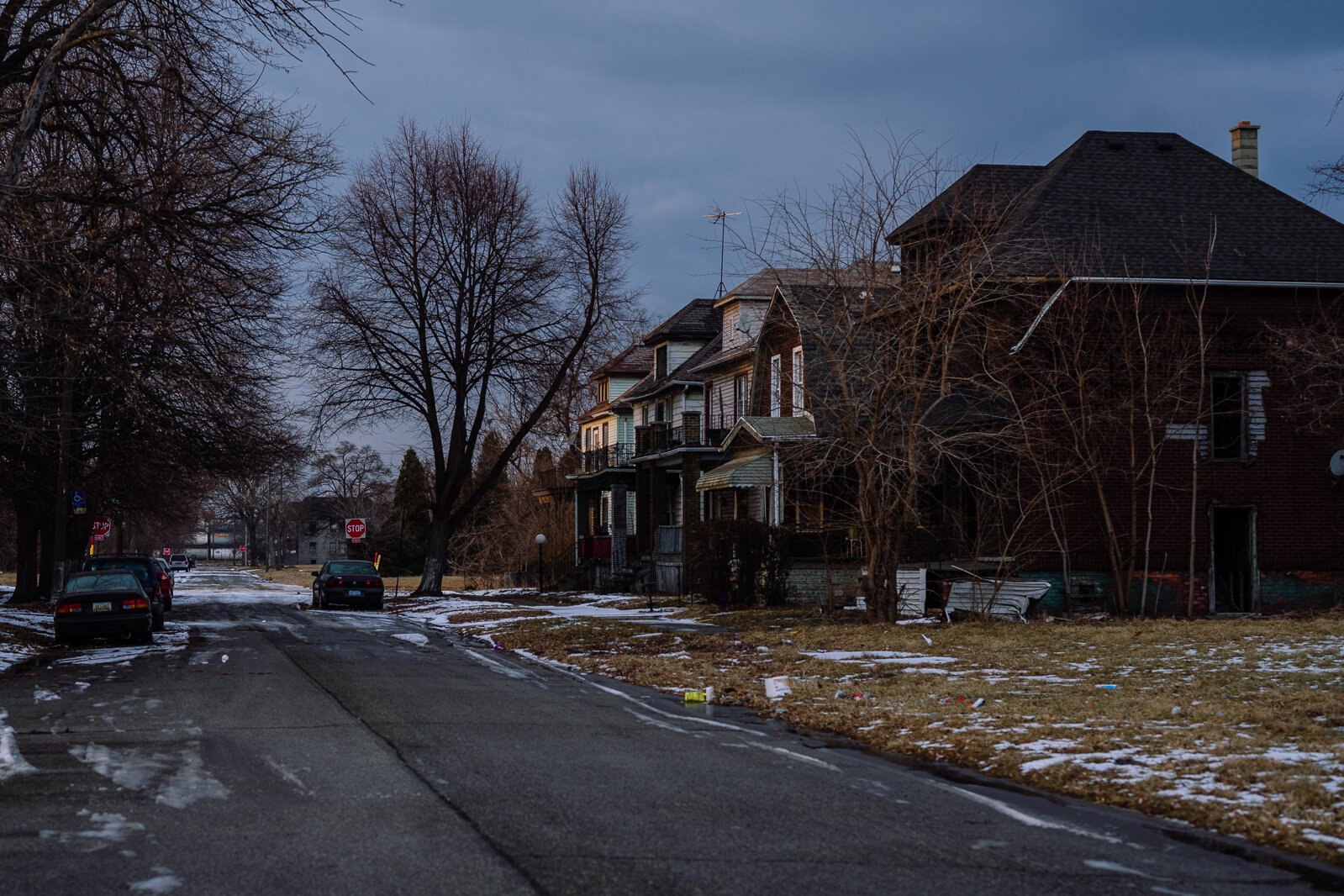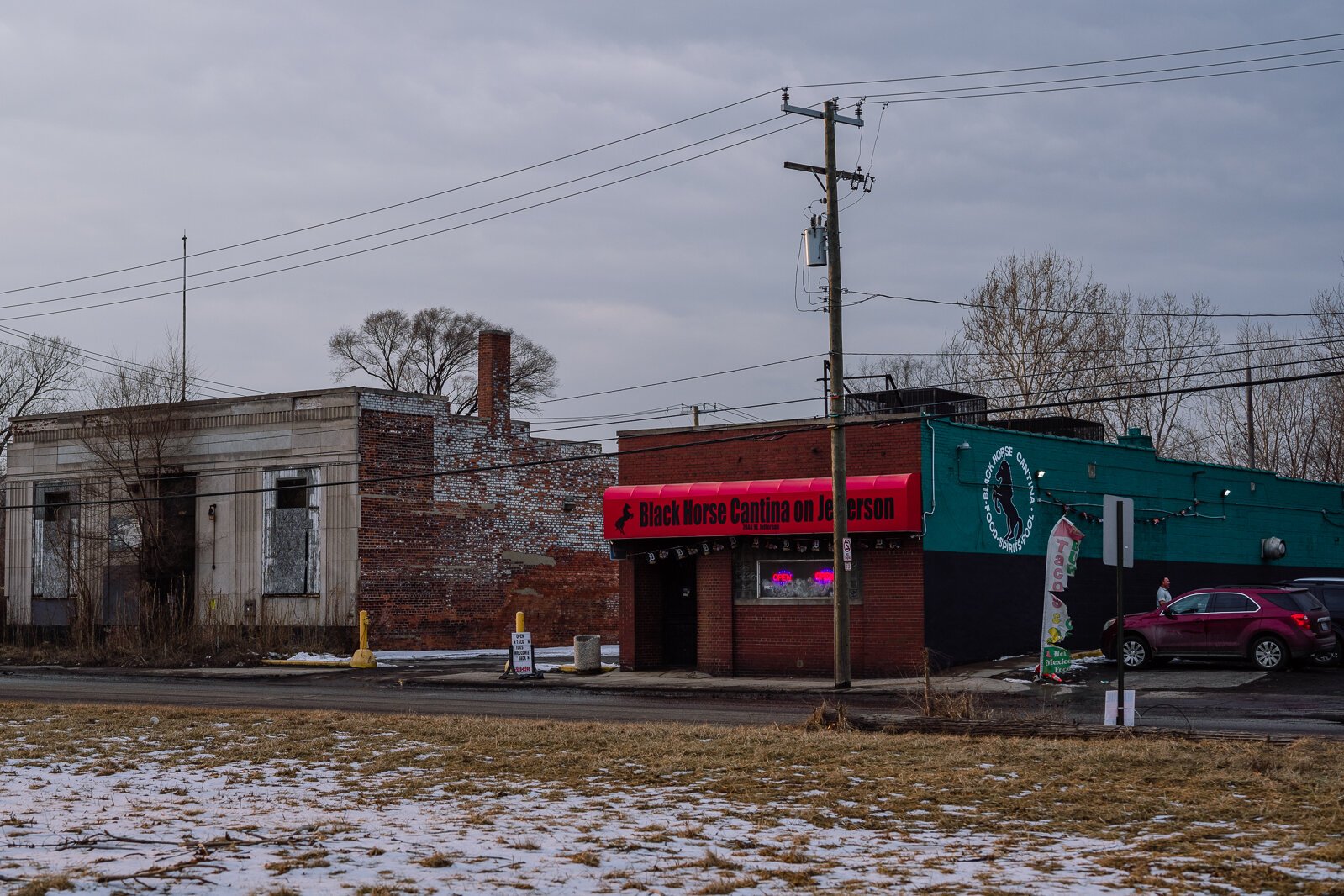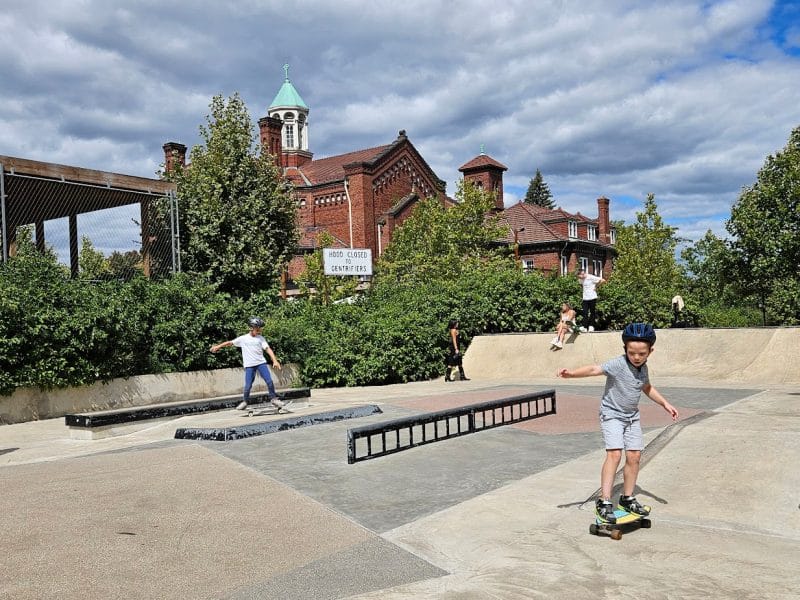Authorities were baffled by a geological incident that caused the ground itself to buckle in Detroit’s Delray neighborhood last fall.
On the night of Sept. 11, the intersection of Dearborn and West Fort streets experienced a shifting of the ground that lasted approximately 35-minutes and left a roughly eight-foot-high mound of earth at one location. The upheaval disrupted gas and water service and damaged the Stash Detroit medical marijuana dispensary so severely that it had to be demolished.
Lara Rose, a Delray resident who lives with her husband about a block away from the site of the incident, remembers the chaotic fallout of the event.
“When I first heard about it, they were saying it was an explosion,” she says. “It was very crazy. All of my neighbors were talking about it.”
After the incident, the water in the downstairs apartment of Rose’s two-family flat turned brown and a faint gas smell lingered in the area for several months. The impact on local traffic patterns has also caused headaches for the Delray resident and her family.
“With the chaos with the trucks and not being able to get on and off our streets, we’d have to wait 10 minutes sometimes to get on our street [or] off our street, getting stopped by officers each and every time,” she says. “I understand they’re just doing their job, but it was very, very frustrating.”
Beyond that, the event has left Rose wondering about how soil integrity issues might affect upcoming local construction projects like the new Gordie Howe International Bridge.
“They’re going to be doing new construction and what have you. It’s definitely a concern,” she says. “If it happened once, who’s to say it’s not going to happen again?”

Concerns and questions
In the immediate aftermath of the event, those tasked with making sense of the situation were frustrated as well. Attendants at the scene that night included emergency responders from the city, Homeland Security personnel, and workers from Detroit Water and Sewerage, Great Lakes Water Authority, DTE Energy, and several telecom companies. Because no one was able to immediately piece together what had happened, Oladayo Akinyem, deputy director of Detroit’s Department of Public Works, was designated the incident commander. In that capacity, he was responsible for coordinating the emergency response effort and investigation that followed.
While responders at the scene were struggling to understand what was going on, community members were wrestling with questions of their own.
Angela Reyes, Director of the Detroit Hispanic Development Corporation, says while there was some effort by Homeland Security and DTE Energy to make residents aware something had happened at the corner of Dearborn and West Fort streets, there was still a lot of confusion. Rose, for example, learned about the upheaval from a friend who had heard about it from a television news program.
“There were a bunch of different entities, but we were never really clear what was happening,” says Reyes. “There was very little information [given] to residents.”

To address these concerns, a coalition was formed that, among others, included Reyes, U.S. Rep. Rashida Tlaib, former Detroit council member Raquel Castañeda-López, incoming council member Gabriela Santiago-Romero, and the Southwest Detroit Community Benefits Coalition (SDCBC).
Members of the coalition engaged in door-to-door outreach to check in with residents and distribute water to people whose service had been disrupted. They also demanded more transparency and action from officials involved with the response. At a Sept. 17 press conference, Tlaib and others also made public their concerns about the safety of those living near the event site and called for them to be evacuated.
The city says measures were taken to inform those near the upheaval. According to Hakim Berry, Chief Operating Officer for the City of Detroit, representatives from both Homeland Security and Detroit’s Department of Neighborhoods went door-to-door to notify residents about the upheaval. That effort, however, was confined to the area immediately adjacent to the incident site. As for the evacuation requests, Berry says that while emergency protocols were followed, an evacuation was not deemed necessary.
“It’s very rare that we in the Midwest have to have an evacuation,” says Berry. “There are emergency evacuation processes through Homeland Security [that need to be followed]. You can’t just hit a button and say ‘evacuate’, because you could have people actually driving into the danger.”

Challenges and change
The struggles of the Delray neighborhood certainly predate the upheaval that hit the corner of Dearborn and West Fort streets on Sept. 11.
Located in an area of Southwest Detroit along the Detroit River, not far from the Ambassador Bridge, Delray has a long association with heavy industry that goes back as far as the late 1890s.
Pollution, in the form of both emissions and dust, has long been a concern for many who live there. Numerous class-action lawsuits have been filed over the years by residents against local companies like Sybill Inc. and Peerless Metal Powders. And two years ago, Marathon Oil, which operates an oil refinery in the area, agreed to pay roughly $82,000 in fines and invest in new environmental filtration equipment, as part of a deal with state environmental regulators stemming from a series of emission violations.
In 48209, the Zip Code where Delray is located, 44.1 percent of the population lives below the poverty line, according to Data Driven Detroit. The population has also been declining in size for many decades, an exodus that has been exacerbated somewhat in recent years by plans to build one side of the Gordie Howe International Bridge there.
Due in no small part to the work of SDCBC, residents there were able to negotiate a community benefits deal with a home swap program. It has allowed many homeowners in the vicinity of the project to trade their houses for other Detroit Land Bank Authority-owned homes. While numerous former residents have taken up that offer, others have opted to stay in their homes near the project zone.
Of more immediate significance to the Sept. 11 incident, the area has also experienced two recent dock collapses. In 2019, a portion of shoreline gave way at the Revere Dock near historic Fort Wayne, dumping sediment and limestone aggregate into the Detroit River. Unsettlingly, the site had previously been used to process uranium and was located near a drinking water intake pipe. Thankfully, subsequent testing did not show elevated levels of pollutants or radiation.
In November of last year, another section of sea wall at the Revere Dock collapsed, spilling soil mixed with petroleum products and other materials into the water. In both cases, the docks were owned by Revere Dock, LLC and leased to Detroit Bulk Storage. Each of the incidents are believed to have been caused by storing heavy piles of material too close to the shoreline.
The city responded to the events with investigations, tickets, and cease-and-desist orders, and Detroit’s Inspector General is now looking into permanently banning Detroit Bulk Storage from operating near the riverfront.
“When we’ve found violations on those companies, we’ve shut them down,” says Berry. “In two of the incidents with the dock collapses, the owner was in violation. And so we have appropriately addressed them along with the state regulatory agencies.”

Reports and recommendations
After more than a month of investigation, the city released a geotechnical report on Dec. 15 with findings about the Delray event. Analysts with the Somat Engineering firm determined there had been significant ground movement the night of the event in “two major heave areas” in the vicinity of Dearborn and Fort streets. In a summary of the report, they stated the incident was likely caused by the “presence of a nearby stockpile of metallic scrap and soft ground conditions.”
The stockpile in question was located at Fort Iron & Metal, a scrapyard that’s been in operation at 9607 Dearborn St. since the mid-1980s. Video footage appears to show the scrap pile sinking the night of the upheaval. Heavy rainfall in the area, which had been 150% higher than usual in the 100 days prior to the event, is also believed to have contributed to the incident.
Ultimately, the report’s authors believe that “the weight of the stockpiled mill scale material exceeded the shear strength capacity of the underlying clay soils to cause the heaved areas and disruption to the existing structures adjacent to the Fort Iron site.”
Viewing last year’s upheaval incident in the context of the two recent dock collapses, SDCBC’s project director Simon Sagovac thinks the city should be paying more attention to the permitting and enforcement of businesses in the neighborhood.
“This irresponsibly causes extreme vulnerability and danger to an already highly vulnerable population as well as to the Great Lakes,” she says. “We did get the Waterbody Protection Ordinance passed in the wake of the first collapse, but it clearly didn’t prevent the second. We have to ask why, how is it falling short?”
In the aftermath of the Dearborn and Fort streets incident, Sagavac believes there needs to be a citywide study of underground conditions to prevent future events
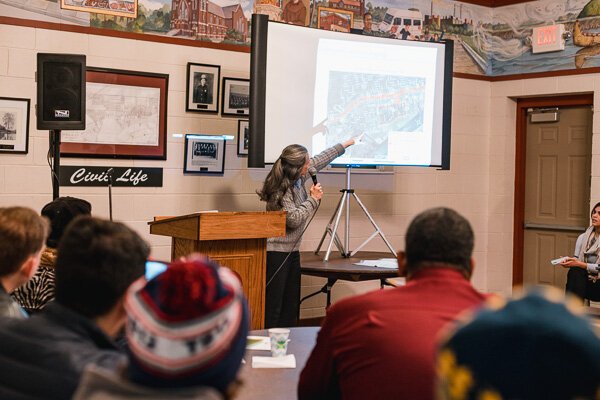
that could hurt people or damage infrastructure connected to water and other utilities.
While the state regulates the height of metal piles at businesses like Fort Iron & Metal, there are currently no related restrictions governing weight. Berry, however, says the city is currently working to address that situation.
“It absolutely is a concern,” says Berry “We are aware that this has happened and we’ve already begun the process of rewriting the ordinance.”
While businesses are required to have geotechnical surveys in order to open, city officials are now considering adding weight regulations and holding periodic check-ups for storage. Any revisions to existing ordinances would need to be approved by the city council to become law.
Despite these assurances, Reyes believes there needs to be more reflection by local officials about what the upheaval and dock collapses might mean for the neighborhood.
“It calls into question, for me, the plans that the city has for Delray to continue to be industrialized and be this transportation hub,” she says. “If the soil is not going to be able to sustain the weight of these types of industries in that area, maybe they need to be relooking at what the plans are long-term for that area, particularly with climate change.”
Although Berry acknowledges the apprehension community members are feeling right now, he’s confident that engineers working on local projects can take ground conditions into consideration and build safe and stable structures in the area. And while Detroit’s chief operating officer agrees that climate change does pose challenges, he maintains that city officials are aware of the necessity of adapting to them.
“We do need to upgrade our infrastructure because we are starting to have these 100-year storms more frequently,” says Berry. “The earth has changed over history, but I think we’re better equipped to manage it. [We need to] have faith in the processes.”
Update: Detroiters can receive notifications regarding emergency events happening in the city via phone, text or email through a recently added service called Detroit Alerts 365. To find out more, visit the city’s Detroit Alerts 365 website.
Photos by Steve Koss, unless otherwise noted.
Resilient Neighborhoods is a reporting and engagement series that examines how Detroit residents and community development organizations are working together to strengthen local neighborhoods. It’s made possible with funding from the Kresge Foundation.
